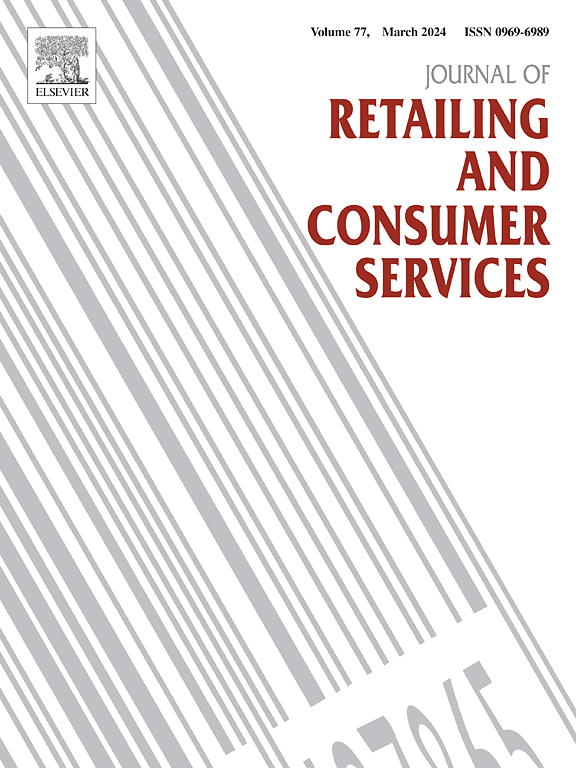语言唤醒如何影响网上零售的购买意向?虚拟与人工影响者、语言典型性和信任的作用
IF 11
1区 管理学
Q1 BUSINESS
Journal of Retailing and Consumer Services
Pub Date : 2024-10-04
DOI:10.1016/j.jretconser.2024.104106
引用次数: 0
摘要
尽管采用各种语言策略促进在线零售和直播业务的做法日益流行,但不同(虚拟与人工)影响者所采用的此类策略的有效性仍不明确。这项研究探讨了语言唤醒(高与低)如何与影响者类型(虚拟与人工)相互作用,从而影响消费者的反应。通过两个基于场景的实验,本研究证明,对于虚拟影响者,使用高(低)唤醒度语言会导致更强的购买意愿,而对于人类影响者,使用高(低)唤醒度语言会导致更弱的购买意愿。我们还发现了一种新的机制,即语言的典型性和信任以串联的方式调解了这种互动效应。此外,我们还讨论了其理论和实践意义。本文章由计算机程序翻译,如有差异,请以英文原文为准。
How language arousal affects purchase intentions in online retailing? The role of virtual versus human influencers, language typicality, and trust
Despite the growing popularity of adopting various language strategies to boost business in online retailing and livestreaming, the effectiveness of such strategies employed by different (virtual vs. human) influencers is still unclear. This work examines how language arousal (high vs. low) interacts with influencer type (virtual vs. human) to impact consumer responses. With two scenario-based experiments, this research demonstrates that for virtual influencers, using high- (vs. low-) arousal language leads to stronger purchase intentions, whereas for human influencers, using high- (vs. low-) arousal language results in weaker purchase intentions. We also uncover a novel mechanism that language typicality and trust mediate this interaction effect in a serial manner. The theoretical and practical implications are also discussed.
求助全文
通过发布文献求助,成功后即可免费获取论文全文。
去求助
来源期刊
CiteScore
20.40
自引率
14.40%
发文量
340
审稿时长
20 days
期刊介绍:
The Journal of Retailing and Consumer Services is a prominent publication that serves as a platform for international and interdisciplinary research and discussions in the constantly evolving fields of retailing and services studies. With a specific emphasis on consumer behavior and policy and managerial decisions, the journal aims to foster contributions from academics encompassing diverse disciplines. The primary areas covered by the journal are:
Retailing and the sale of goods
The provision of consumer services, including transportation, tourism, and leisure.

 求助内容:
求助内容: 应助结果提醒方式:
应助结果提醒方式:


